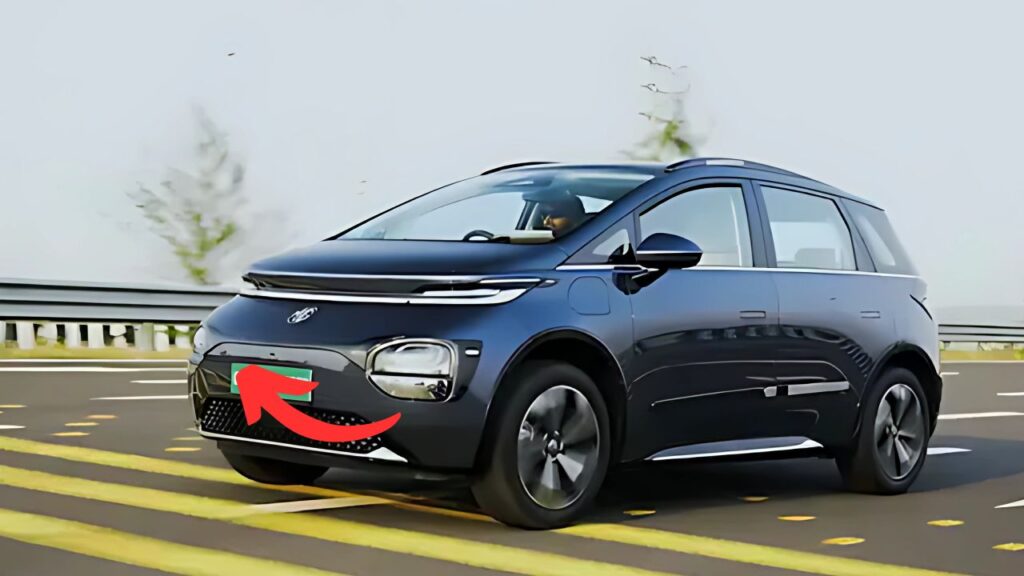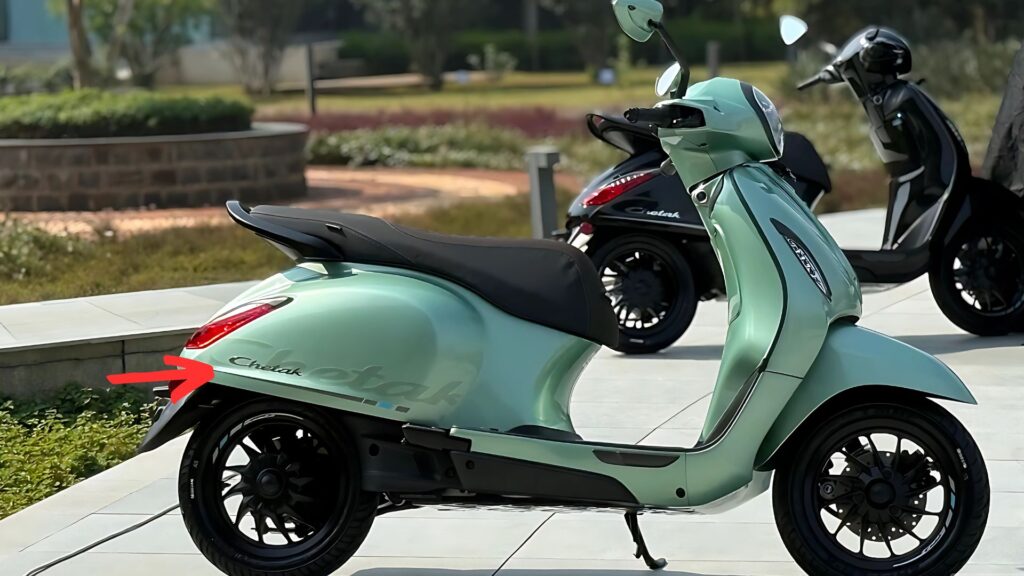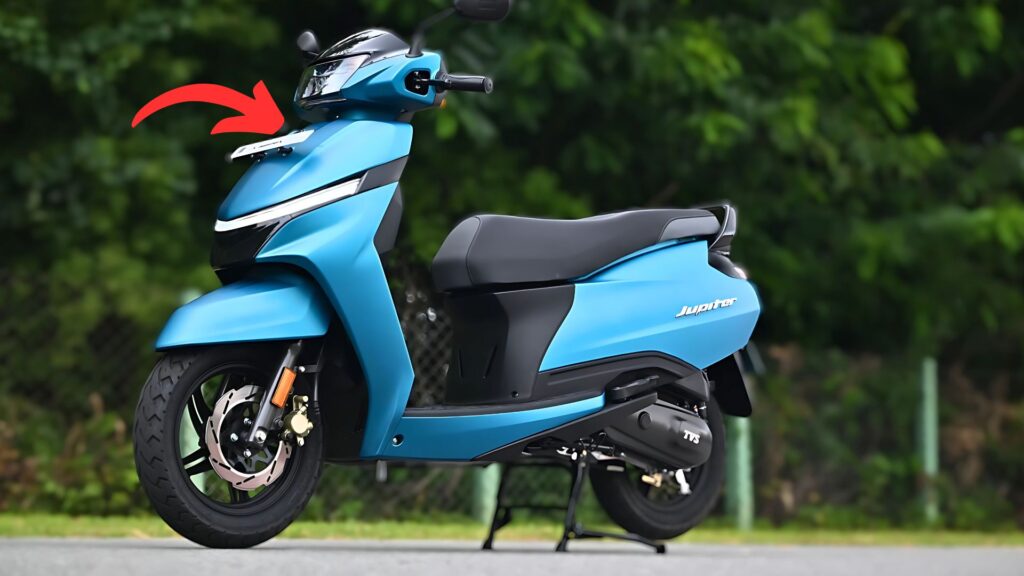New CNG Scooter : As my car inched through the sluggish morning traffic on Hosur Road, on my way to the tvs motor company headquarters.
What I saw there, however, was something that India two-wheeler market had never experienced before – the first factory-fitted CNG scooter in the country.
With CNG technology restricted to only auto-rickshaws and cars thus far, TVS has taken a daring move to bring this alternative fuel to the mass-market scooter segment with the debut of the GreenRide.
I’ve been riding this new fangled contraption for three days now and, across Bangalore’s traffic spectrum, I can vouch for the fact that back in Hosur, prodding the R&D team to just fit a CNG kit wasn’t the only thing bearing on the Buyastronauts – sorry, board.
They have developed a scooter designed for a purpose which may change the economics of urban commuting in fuel-price-sensitive India– Photo: M F ANSARIAll charged up At a massive R185 per litre in Mumbai, India’s vesara or middle class family spends its hard-earned money on fuel, realising the value of less expensive gear.
Table of Contents
New CNG Scooter The Engineering Challenge of the Innovation

Making a CNG scooter is not just about bolting another cylinder on an existing model.
The engineering problems are legion, not least in terms of packaging, weight distribution and so on – problems that are an order of magnitude more awkward on a dinky two-wheeler than a car or an auto-rickshaw.
“We’ve been at it for close to four years,” TVS’s Head of Product Development Rajiv Kumar said in the course of an exclusive walk through of the technology.
“The eCentro is the result of an innovative breakthrough, designing a tailor-made, lightweight composite CNG tank that can be built into the scooter body without affecting ride and safety functions.
This 1.5kg CNG storage tank developed in collaboration with a South Korean special company, is capable of storing 1.5kg of compressed natural gas at 200 bar pressure.
It’s mounted under the floor with helps to get the weight down low so the CoG is low but it still has 14-litres of under seat space, which is isn’t a lot but isn’t the end of the world (or 30% less space than a traditional scooter) so it should be big enough to hold a half-face helmet with some space for a few other small items.
The 110cc motor is an all-new unit, and has been designed to run efficiently on either petrol or CNG, each having its own dedicated fuel-injection system.
Riders are able to switch between fuel sources with just a flick of a switch on the handlebar—and this can be done while riding, handy if you happen to run out of CNG and aren’t near a filling station.
“The bi-fuel strategy was key,” said Kumar. “CNG infrastructure, although expanding quickly in urban areas, is still not developed to the point where a CNG-only vehicle is practical for average drivers.”
New CNG Scooter Economics of overwhelmingly good sense:
CNG’s strong value proposition Economically, the CNG proposition has always been simple and strong and at GreenRide we are only enhancing it in the cool & sexy scooter space.
On my test runs around Bangalore on different route, the scooter consistently returned around 40km/kg of CNG, which told me that its running cost would be around the ₹2/kilometer mark in the city (CNG is currently priced at ₹78/kilogram in Bangalore).
This is around 40% cheaper than petrol, which at present prices of ₹102.89 per liter in Bangalore and average scooter mileage of some 50 km/l, is about ₹2.05 per kilometer.
“For an average urban commuter traveling 40-50km daily, this spells monthly savings of ₹800-1,000,”Vikram Singh, automotive analyst with a financial firm, and with whom I shared the economic impact, explained to me.
“Even a few percentage points’ difference can more than offset the price premium in the first 12-15 months of normal use.
The GreenRide is priced at ₹89,999 for the base model and at ₹95,999 for the connected version with TVS’s SmartXonnect features – about ₹15,000 more than comparable petrol-only 110cc scooters.
This price position is a fascinating middle ground between the ordinary 110cc offerings and the slightly costlier 125cc category.
At a TVS dealership in Indiranagar, where I went visiting the other day, potential customers were poring over elaborate cost break-down sheets that salespeople had drawn out, listing out projected savings (on usage) in tabular format.
“Customer response has been very inquisitive,” noted dealer principal Mohan Krishnan. “It’s the calculation they’re doing right here in the showroom.”
RIDE: Incredibly Conventional for an ATB Truth be told, I did not tell any difference.
What might be the most astonishing thing about the GreenRide is how normal it feels to ride.
Despite its innovative engine tech, TVS has somehow preserved the handling and ride ease that makes for a good commuter scooter.
The scooter feels a bit slow during initial pickup on CNG mode than the petrol mode but once you are on the move, acceleration is fine for city commute.
As I rode the GreenRide to the ever-infamous Silk Board junction in Bangalore during my testing, the GreenRide could handle the start-stop traffic reasonably well, with sufficient torque to make its way through gaps if necessary.
The stated top speed of 85kmph (93kmph on petrol) feels spot on when the floorboard is stretched on the faster stretches of the Outer Ring Road as part of our test run, however, the scooter feels happiest motoring along in the 55-65kmph zone.
Even the weight distribution (should always be challenging on a CNG vehicle converted from regular) is well arranged.
Weighing 115KG, the GreenRide is roughly 7kg more than similar capacity petrol scooters however the low mounting of the CNG tank means that weight is not as apparent and the scooter remains stable.
“We have tweaked the suspension tuning to account for the added weight,” Kumar said.
“The front telescopic forks have a little more spring rate in them, the rear shock absorbers have a little more of a progressive damping.”
This level of detail is apparent in the ride. It also glided over one of the worst sections on Old Airport Road, with the rear deflecting only so much energy to the rider.
New CNG Scooter Real Life Use: Practical and Usable Thoughts
For potential buyers, the biggest practical question remains infrastructure for refueling. CNG stations for now are only in large cities with around 4,500 in total nationwide, compared to 83,000 plus petrol pumps.
This confines the GreenRide for city dwellers living in cities that have CNG networks set up including the likes of Delhi-NCR, Mumbai, Bangalore, and Hyderabad.
Refueling, too, is a doddle but a different process to popping into a petrol station. I was given a test drive and drove down to a CNG station in Marathahalli to see the process for real.
CNG CNG filling does not follow the petrol refueling routine as it needs the engine to be turned off, and it takes a bit more time – about 3-4 minutes, against 1-2 minutes needed when filling petrol.
What’s special about the GreenRide is its 5-liter petrol tank that offers an additional 250km of range on top of the existing 60km range from the CNG tank.
That dual-fuel strategy means that range anxiety isn’t something any rider will have to worry about, even if, say, he or she occasionally offers service that extends beyond CNG’s range.
Yet another consideration is service needs. The GreenRide will require specialized service from trained mechanics, however TVS promises to position CNG-certified mechanics at all its authorised service centres in those cities where the scooter will be sold.
“The maintenance schedule is the same as our petrol cars,” promised Kumar. “The components of the CNG system are designed to last the life of the scooter, with required safety inspections of the tank and lines every three years.”
New CNG Scooter Economic (and Environmental) Impact beyond the Economics
Naturally, the driving force behind the push for CNG and economic benefits, but the environmental benefits of CNG shouldn’t be discounted.
CNG cars emit around 25% lower carbon dioxide than their petrol counterpart, as per figures from Society of Indian Automobile Manufacturers.
On top of this, CNG has reduced particulate matter emissions (dirt that people see coming out the tailpipe) and NOx emissions which also are a major source of urban air quality problems.
In cities like Delhi, where Air pollution in certain seasons becomes a crisis, mass for CNG 2 wheelers could help cleaning up the air, even as delivering domestic natural gas has proven to be a success story.
“Over 70% of India’s vehicle population are two-wheelers,” observed environmental policy researcher Ananya Gupta, whom I reached out to for analysis about the potential effects. “Just a small fraction of this fleet if converted to cleaner fuels could have significant benefit to urban air quality.”
The eco-friendly aspect has been widely marketed by TVS, the name “GreenRide” too echoes the same.
Italie has incorporated subtle leaf patterns into the bodywork and the scooter’s body panels are constructed from 25% recycled material – indicating that its commitment to sustainability extends beyond what powers it.
New CNG Scooter OUTLOOK AND COMPETITION IN THE MARKET
The GreenRide will have no direct competitor in the market and TVS would enjoy a first-to-market advantage in what it hopes to be a lucrative segment.
Industry insiders say other manufacturers are closely watching, with at least two major players believed to have similar projects in the works.
TVS has been more than ready to lead the new technology programmes in the Indian two-wheeler segment, said automotive analyst Vikram Gour.
“They were at the forefront with things like digital technology and LED lighting in the bigger scooter segment. This CNG decision is a daring one to make, but it is consistent with their innovation-driven brand positioning.”
The initial sales targets are conservative, with TVS expected to commence sales in Delhi-NCR, Mumbai, and Bangalore in the first phase, before expanding into other cities where the CNG infrastructure is well developed.
Capacity runs to 10,000 per month, but, as is always with Crowdfunding, there’s potential to scale that up should demand exceed all expectations.
Taking into account the compelling economic proposition of the GreenRide, we should expect serious consideration for the same by commuters in CNG-fed cities, who ride 40+km every day, by assuming the higher initial investment and adding it into the equation.
While fuel prices are not likely to come down in a significant way anytime soon and government policy is turning in favor of cleaner alternative fuels, TVS may of course see a market opportunity that is yet unexplored and of immense potential.
As I delivered the test machine back to TVS at their headquarters, a chat with a company executive probably encapsulated the GreenRide’s positioning best: “We’re not under the illusion that this is going to replace petroleum fuelled scooters overnight.
However, for the budget-conscious, eco-friendly urban commuter, we have delivered an option that has not existed in the past. That’s evolution with a practical point.










